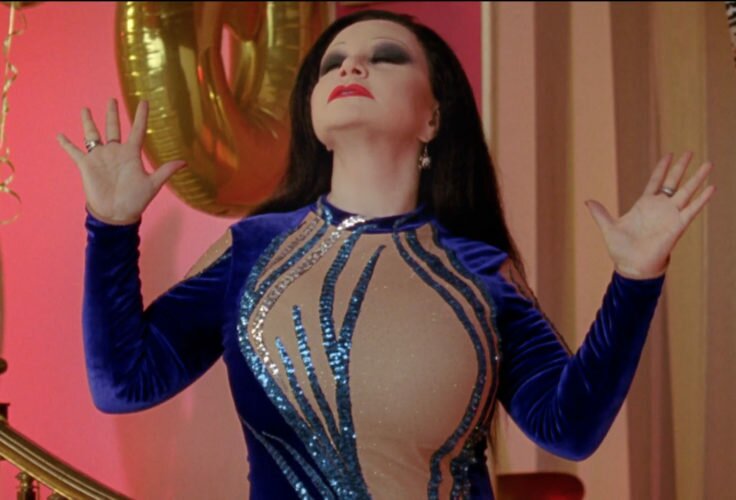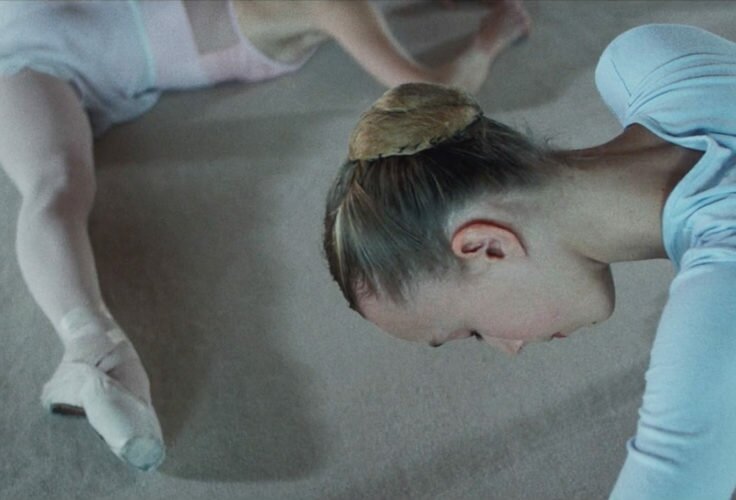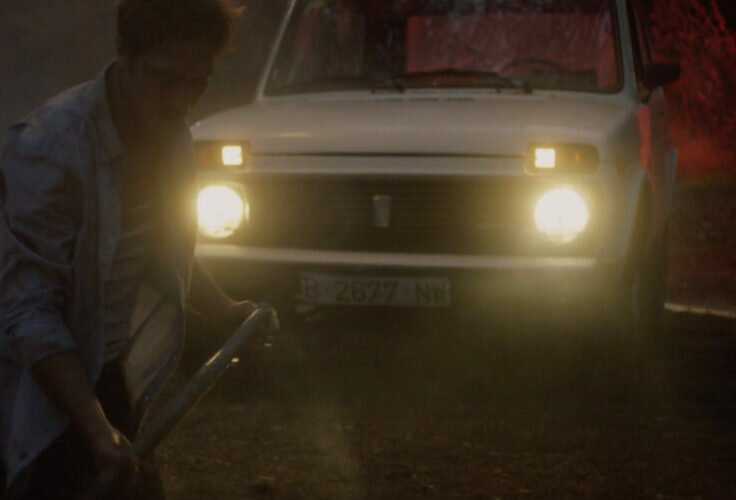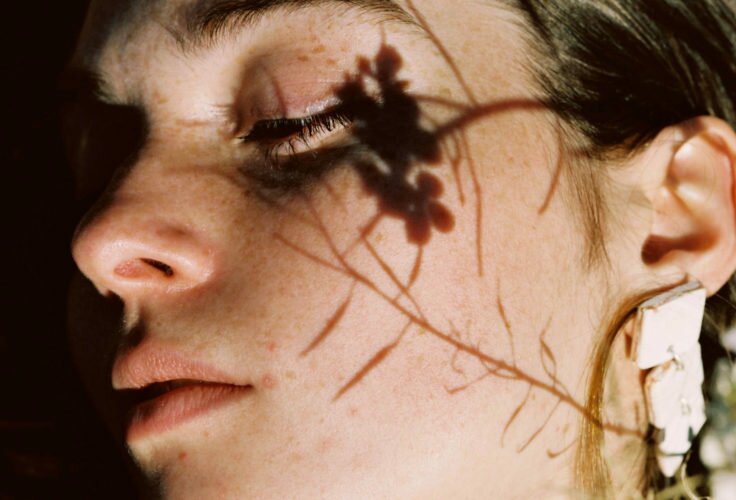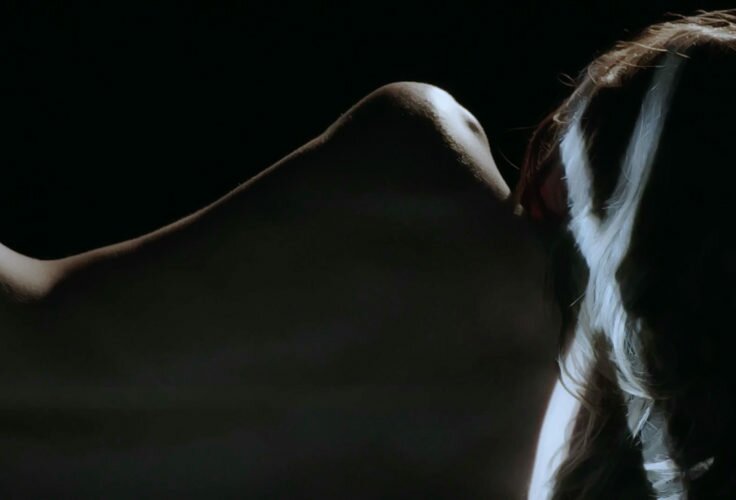¿Quién es Stanley Sunday?¿A qué dedica el tiempo libre… David Domingo? Nos hemos embarcado en la ardua tarea de descubrir qué oculta, o qué enseña, tras este seudónimo.
Blog Swap
Hemos vuelto de vacaciones y nos hemos liado. Ya no solo no recordamos nuestras passwords, sino que tampoco tenemos claro quién hacía qué. ¿Era Ben Tuthill el que siempre comentaba videoclips y Jordi Costa el que solo reseñaba viñetas? ¿O era al revés? En cualquier caso, esto es lo que ha terminado pasando: sus columnas habituales aparecen hoy excepcionalmente intercambiadas. Blog swap, pues.
Stolen Cartoons.
Runaway American Dreams
by Ben Tuthill

If you’re in the market for ruining your day, get a hold of some vintage issues of Heavy Metal magazine and read through the first few cycles of Stefano Tamburini and Tanino Liberatore’s fascinatingly reprehensible comic . Ranxerox is the story of Rank Xerox, an ultraviolent robot made from Xerox parts, and his lover Lubna, a young (and notably young-looking) heroin addict, as they travel the streets of Rome and New York in a constant array of blood, sex, and postmodern absurdism.
I can’t say I really like Ranxerox. Like Duck Dynasty or a Ghostbusters comment section, it’s the sort of thing that you fall into by chance and wish you had the willpower to get out of several hours sooner. It’s an equal mix of beauty and inexcusable filthiness – for every striking panel, there’s an equally indefensible plot point (sometimes they’re simultaneous: the panel of Rank crushing a little girl’s hand is postmodern Michelangelo, but it’s also a painting of a homicidal sadist crushing a little girl’s hand). Like the Saw movies or a lesser season of Game of Thrones, the atrocities start to get blasé after the first few cycles. Highbrow ultraviolence is all well and good, but after a while you start to wonder if we really need another depiction of blood-spattered symphorophilia to realize the horrors of modern banality.
What sets Ranxerox apart from its shock-art peers, though, is Libertore and Tamburini’s acute sense of irony. Like a mass media equivalent of a Bataille novel, Ranxerox takes an all-too-conventional trope and exposes it for the horrorshow that lies beneath the surface. Rank’s day-to-day adventures are hideous, but they’re unsettlingly reminiscent of the entertainment media that we consume every day without question. How many times have we watched without blinking as an action hero slaughters hundreds of relatively innocent bystanders for the sake of a McGuffin? How many times have we cheered on a charming male protagonist as he manipulates a female romance-object for our pleasure and amusement? Tamburini and Libertore amplify those horrors to an intolerable degree, but the root of the discomfort –the violence, the abuse, the narcissism– are all present in mainstream mass media. Ranxerox just forces them to the forefront.
If you could pick one image to sum up Tamburini and Libertore’s project, it’s a large panel from the first 1983 Heavy Metal cycle of Rank carrying a half-naked Lubna on his shoulders as she dances to headphones blasting the opening lines of Born to Run. Rank squints suspiciously at the filth of the crowded cyberpunk New York that surrounds him. Lubna is in her own world, proud in an adolescent-indifference way of the hunk of masculinity that protects her. It’s the kind of love that you only see in Bruce Springsteen songs, an us against them where the ‘us’ is only an other used to buttress one’s own rebellious individualism.
Born to Run is an especially nasty allusion, even in a comic full of them (in an earlier scene, Rank hijacks a speaker system and sends out a frequency that kills everyone in the room except his target, a diabolical music critic who survives the assault because he’s listening to Joy Division on his headphones). If you read the Ranxerox In New York cycle as an all-out assault on American values, Springsteen comes as an especially low blow. Attack America, fine – but Bruce? Bruce Springsteen is the great defender of everything good about American culture. Hard work, reckless love, the glory of the individual will – these are the things that Springsteen fought to redeem at a time when it was awfully hard to be a proud American. Don’t drag him into this porny, hateful trash fire.
My love for Bruce is real – I think a lot of Americans feel the same way, even if they’re less fond of his music than I am. Libertore and Tamburini aren’t American, though, and they have no sentimental forgiveness for our best cultural propaganda. And in the context of his Ranxerox panel, it’s hard to blame him. Rank and Lubna lay Springsteen’s project bare – a robotic assembly of masculine tropes, directed toward the defense and subsequent exploitation of a particular brand of infantilized femininity, all in the name of freedom.
Even more than Born to Run, the Ranxerox panel makes me think of . Thunder Road is maybe my favorite song – it gets me to the brink of tears about every tenth time I hear it (since we listen almost exclusively to Bruce Springsteen Pandora at my workplace, that’s quite an achievement). But it’s hard to deny that this most American of classics is the story of an older man trying to convince a recent high school graduate to have sex with him by spitting out a series of standardized car metaphors. It’s verbally abusive, and it’s staggeringly self-interested – Bruce expresses nothing other than the desire to dominate Mary and bring her into his personal liberation project.
No part of me wants to ruin Thunder Road, for myself or anyone else. No part of me wants to ruin any Springsteen song. But what makes Ranxerox so compelling is its ability to force these everyday horrors out of the things that I’d much rather love. It doesn’t keep its vileness to itself – it makes everything else feel just as vile as it ought to. Libertore and Tamburini pull so many of the Americanized world’s sins to the surface – the idiocy of mass media, the fetishization of youth, the mechanization of masculinity. They force us to see those sins not only in Rank and Lubna, but in the media and values that Rank and Lubna consume and imitate. Springsteen, like Rank, is an amalgamation of classic American tropes. The ‘little girls’ of his dreams, like Lubna, are affectless balls of passion who devote their lives to the valorization of a protagonist’s freedom-complex. The love between them, like Rank and Lubna’s, is an instance of co-dependent self-interest that fights with everything it has to present itself as something other than egoistic fulfillment.
For all its transgressive humor and basely appealing violence, reading Ranxerox is a miserable experience. It’s not something I ever really want to read again. It’s not really anything I feel that I can defend. But it calls to the forefront everything that I don’t like and asks me to see it in all the places where I don’t want to see it. It’s one thing for transgressive art to trash what’s obviously awful, but it’s another thing to hone its assault sharply enough to force its reader to question the things they think they ought to love. Some art wants to watch the world burn – but some forces you to realize that there’s more on fire than you’d like to admit.
Pimpinela y Dyango vs.
Obras maestras del terror
por Jordi Costa
¿Qué es un video musical? ¿Una herramienta benéfica capaz de liberar las imágenes implícitas que guarda una canción en su interior? ¿O un instrumento diabólico empeñado en someter algo tan evanescente y libre como la expresión musical bajo el yugo de una narrativa impuesta?
Puesto que hace demasiado calor como para enfangarse en un debate bizantino de este calibre, aprovecho la amable invitación de participar en esta sección ajena escogiendo un vídeo musical que me libera de meterme en semejante fregao teórico, porque hay canciones explícitamente narrativas, como un relato de O’Henry. O de Roald Dahl. O como una historieta de terror de la Warren. Con su giro final rematando una construcción minuciosa y, en principio, perfecta.
El caso de estudio es Ese hombre, puesta en movimiento de la feliz colaboración entre el dúo Pimpinela y el solista Dyango. No es un dueto. Es un terceto. O, más bien, un trío. No, un trío no. Un menage â trois tampoco. Sino la crónica (melódica) de una traición sentimental. Ritualizada. Estetizada.
Como todos sabemos, el dúo argentino Pimpinela, integrado por los hermanos Lucía y Joaquín Galán, ha popularizado una modalidad de narración cantada que se fundamenta sobre la dinámica de la discusión. Su arte remite a una modalidad muy proletaria de vivir el sentimiento: los Galán no cantan al arrullo, sino al desplante. Lo suyo no es la unión, sino la fractura. Después de lo que se canta en una canción arquetípica de Pimpinela, intuimos que a la voz masculina le espera un futuro inmediato de mudanza, de noches en apartotel con derecho a cocina, de litigio y de pago regular de pensión conyugal. A la voz femenina le esperan tardes de desahogo en peluquería, de pasar páginas del Pronto o el Lectura rociadas de lágrimas y de afecto solidario y camaradería entre amigas. Frente a ese modelo dialéctico de discurso cantado, la voz rota de Dyango introdujo en la balada romántica española de desamor o de corazón devastado algo del desgarro faríngeo de cantante italiano tradición Ricardo Cocciante, el hombre que, según apuntaba Paolo Sorrentino en su novela Todos tienen razón, mayor partido (lucrativo) le ha sacado a la explotación melódica de la cornamenta (propia). El look de Dyango, frente a las convencionales encarnaciones del eterno masculino y el eterno femenino de los hermanos Galán (casi propias de una fotonovela de los setenta), marca una premonición de modernidad o de futuro: su manera de sostener los cigarrillos, esa permanente propia de cuando las peluquerías de caballeros empezaron a llamarse gabinetes psicoestéticos, y esa fatigada templanza de quien se ha vasectomizado para seguir canalleando sin la preocupación de dejar daños colaterales a su paso, revelan una suerte de esbozo de eso que, en adelante, se daría en llamar Hombre Nuevo o Metrosexual.
Ese hombre, la canción, obligó tanto a Pimpinela como a Dyango a ir más allá de sus respectivas claves estéticas: los primeros pasaron del duelo dialogado a habitar dos planos de realidad, mientras que el segundo abandonó su universo de autolaceración introspectiva para convertirse en voz dialogante y vértice oscuro de un triángulo adúltero. Ese hombre, el videoclip, la película, consiguió destilar todo esa tensión en imágenes de un modo ciertamente magistral, como solo el kitsch puro (o sea, el que no ha sido prefabricado, el que no sabe de distancias irónicas) podría hacerlo. La canción ya aporta las claves de una estructura dramática y argumental especialmente alambicada: dos amigos hablan sobre una ausencia, mientras uno de ellos, puntualmente, va evocando la voz de la ausente, que habla (y canta) desde el espacio platónico de la satisfacción sentimental (que dobla, a su vez, como espacio de la traición de, fijémonos, el único personaje que en el vídeo musical viste de blanco impoluto, circunstancia indumentaria que lo designa como inocente, o puro). En otras palabras: dos hombres hablan de dolor en un espacio material, urbano, hecho de callejones oscuros tenuemente iluminados por la luz mortecina de las farolas, de escaleras empañadas por el vapor de la melancolía, de tascas con jarra de barro, chato de vino e interiorismo castellano, mientras se convoca la voz de una mujer que habla desde los jardines de El año pasado en Marienbad en el vuelo celeste que le proporcionan unos hipotéticos soportes hidráulicos que confieren a sus palabras (aparentemente tranquilizadoras, pero brutalmente dolorosas para uno de los interlocutores) una cualidad aérea. Sabemos que ha habido una ruptura sentimental y que el tipo vestido de blanco (el flanco doliente de la ruptura) sabe que su antiguo amor ya ha encontrado quien le alivie las heridas del corazón. Vestido con chupa de cuero y camisa a cuadros en dominante color amarillo, Dyango se sumerge en un titánico trabajo de triplicación dramatúrgica: de entrada, es el hombro sobre el que llorar, pero, también, el portavoz de la felicidad femenina… y, lo que resulta más atrevido, el apólogo de las buenas intenciones de “ese hombre” que proporciona el título al melodrama. Hay en la pareja de hombres la confrontación entre dos formas de masculinidad: la que ya ha caducado (el tipo vestido de blanco, con barba de Geyperman y ademanes de castigado exgalán de tebeo romántico) y la que empieza a conquistar el presente (el look Dyango no desentonaría en un club liberal de intercambio de parejas). Ella, con su vestido estampado, su pamela y el modo en que se atusa el pelo en un momento dado, encarna una suerte de quintaesencia de una feminidad no tanto atemporal como evocadora de un viejo tebeo de Florita: ¿un hombre sofisticado y con un pie en el porvenir como el que encarna Dyango puede sentirse realmente atraído ante una imagen tan trasnochada? Probablemente, no. He ahí, pues, una posible lectura alternativa de esta historia: lo que guía a ese personaje masculino artero no es ni el amor, ni el deseo, sino el imperativo de mancillar un ideal, de retorcer una inocencia. De ahí, quizá, que todo termine con la contundencia de un relato de terror: más cerca de The Caterpillar –ese estremecedor episodio de la segunda temporada de Galería nocturna– que de cualquier entrega regular de Dimensión desconocida. A la revelación final –“ese hombre soooooy… yo”– sigue un enfático acercamiento, por abruptos cortes de montaje, al rostro impertérrito de la mitad masculina de Pimpinela: ninguna emoción parece emerger de esa impasibilidad, aunque sabemos perfectamente que, detrás de esa cara de cartón, hay un alma demolida. Si la oscuridad de la historia no había quedado suficientemente clara, el punto y final lo aporta la imagen de una foto quemándose: la imagen de esa amistad que fue el caldo de cultivo de este teatro de la crueldad consumida por las llamas infernales de la ingratitud y la deslealtad. Pimpinela y Dyango bordaron, sin duda, una Obra Maestra del Terror que podrían haber envidiado papá Ibáñez Menta e hijo Ibáñez Serrador.



